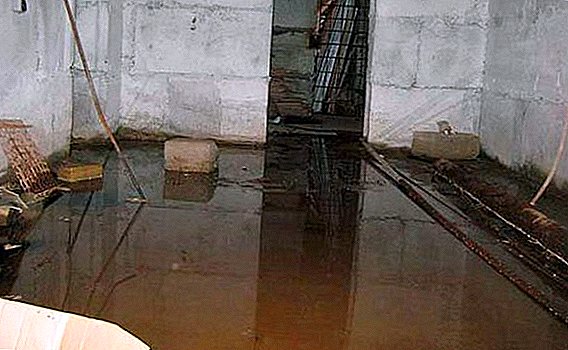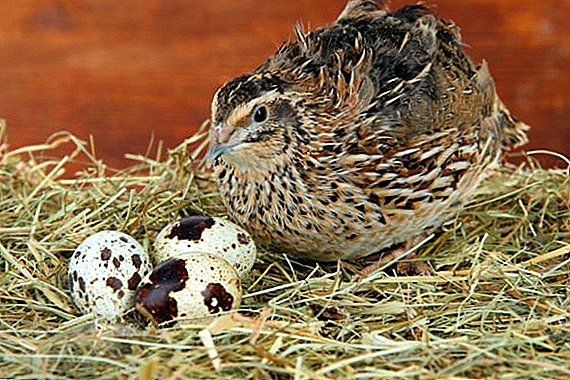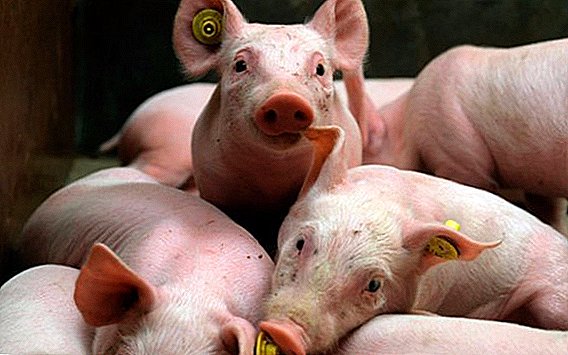 Pasteurellosis is considered one of the most dangerous diseases that affect pigs. It is very important to correctly identify the sick pig and take measures so that this disease does not take the scale of the epidemic. In the absence of treatment of diseased pigs, mortality reaches 70%. We will talk more about pasteurellosis in pigs, the causes of the disease, symptoms and treatment.
Pasteurellosis is considered one of the most dangerous diseases that affect pigs. It is very important to correctly identify the sick pig and take measures so that this disease does not take the scale of the epidemic. In the absence of treatment of diseased pigs, mortality reaches 70%. We will talk more about pasteurellosis in pigs, the causes of the disease, symptoms and treatment.
Description
Swine pasteollosis is a serious infectious disease characterized by infection of the animal’s blood with pathogenic microorganisms that cause hemorrhagic inflammation of the upper respiratory tract and intestines.  This disease can often be diagnosed in conjunction with other diseases of pigs - plague and mug.
This disease can often be diagnosed in conjunction with other diseases of pigs - plague and mug.
Important! The causative agent of the disease, Pasteurella multicida bacillus retains its activity in water - up to 3 weeks, in an animal corpse - up to 4 months, in frozen meat - up to 1 year.
Causes and pathogens
One of the main causes of the disease of pasteurellosis is the failure to comply with sanitary and hygienic standards in the pigsty.
Increased humidity, poor nutrition, a large number of pigs in the stall, weakened immunity, hypothermia - all of these factors contribute to the reproduction of the pathogen, Gram-negative Pasteurella multicida.  This microorganism has an oval shape (the shape of a capsule) and has morphological variability - it takes on the appearance of some types of coccobacteria and ovoid.
This microorganism has an oval shape (the shape of a capsule) and has morphological variability - it takes on the appearance of some types of coccobacteria and ovoid.
A healthy animal may become ill after contact with a diseased individual when consumed with pasteurella water and feed.
Did you know? Pigs do not just grunt - they have their own language. There are about 20 identical sounds that are used by pigs to express their desires.Diseases can be rodents, insects and even birds. The infection penetrates the animal through cuts on the skin, the gastrointestinal tract and by air.
Pasteurellosis in piglets can occur when feeding milk from an infected sow. 
Symptoms of manifestation in various forms
The incubation period of pathogenic microorganisms Pasteurella multicida is from several hours to 3 days. The disease can occur in acute, over-acute and chronic forms. Let's look at the signs of pasteurellosis and the course of each of the forms of the disease.
Familiarize yourself with such representatives of the breeds of pigs as Mirgorodskaya, Duroc, meat, red-belt, Vietnamese.
Sharp
The acute form of the disease is characterized by a rapid rise in temperature to 41 ° (38-39 ° is considered normal temperature in pigs), refusal to eat, shortness of breath, and the general state of the animal is oppressed.
There may be a cough, nasal discharge, often with blood. When pressing on the chest, the animal may react painfully. Developing cyanosis of the ears and mucous membranes. In the acute form of the disease, the animal rarely survives. Death occurs at 3-8 days. 
Super sharp
The super-acute form of pasteurellosis is similar in symptoms to the acute form of the disease. Neck swelling, thirst and heart failure are added, as a result of which the belly, thighs and ears of a pig acquire a bluish tinge. The animal dies for 1-2 days.
Did you know? Hungarian Mangalitsa pigs have strong immunity and have the highest percentage of convalescence from pasteurellosis. - 92%.
Chronic
In some cases, some improvement occurs and the disease takes a chronic form. In this case, the symptoms of the disease remain coughing, swollen joints, the animal begins to lose weight and weaken rapidly, and eczema of the skin appears.
Increased body temperature is normal. In this case, the death of an infected pig occurs within 1-2 months. 
Diagnosis of the disease
The occurrence of at least one of the above symptoms is a reason to apply to the veterinary service. Sick animal must be urgently isolated.
In order to make an accurate diagnosis and eliminate the plague and pork erysipelas, laboratory studies are needed.
Important! Pasteurellosis is not only dangerous for animals. A person can also become infected after contact with a diseased individual or through injury to the skin. Lack of timely treatment leads to joint swelling and arthritis.For bacteriological evaluation, dead or intentionally killed pigs are sent to the laboratory (no more than 5 hours should pass from the moment of death), and they should not have been treated with medications.
 Also investigated are the kidneys, spleen, lungs, infiltration from the chest cavity.
Also investigated are the kidneys, spleen, lungs, infiltration from the chest cavity.Treatment
For the treatment of pasteurellosis used antibiotic therapy. The following antibiotics - Tetracycline, Enrofloxacin, Dibiomycin, Levomycetin, Terramycin - effectively affect Pasteurella multicida.
Learn more about pig breeding.Drugs should be given strictly as prescribed by the attending veterinarian. During the treatment of sick individuals relies improved drinking and nutrition.

Preventive measures
In order for your pigs not to suffer from pasteurellosis, it is necessary to monitor the implementation of sanitary and veterinary standards, among them the main ones are:
- timely introduction of serum against pigs pasteurellosis;
- regular airing of premises (but drafts should be avoided);
- providing animals with a healthy and balanced diet, clean drinking;
- regular vet check-ups;
- timely and regular disinfection, disinsection and disinfestation;
- timely isolation of a diseased pig from healthy ones.












